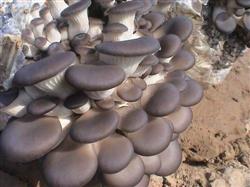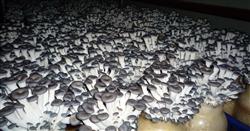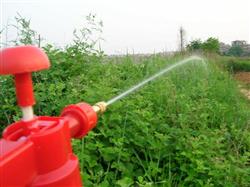What kind of mushrooms do you have? What are the cultivation techniques?

What kind of mushrooms do you have? What are the cultivation techniques? Please introduce Pleurotus ostreatus, also known as frozen mushroom, abalone mushroom, white shiitake mushroom, Pleurotus ostreatus, delicious north wind fungus, etc., belonging to basidiomycetes, Agaricus, Pleurotus ostreatus (Pleurotus ostreatus). Pleurotus ostreatus is a health food with high protein and low fat because of its tender meat, delicious taste and rich nutrition. Pleurotus ostreatus has exuberant growth and strong adaptability. it is one of the largest cultivated edible fungi in the world, mainly producing China, Japan and Italy. It is cultivated in all provinces except Qinghai, Xizang and Ningxia. 2. The growth and development of Pleurotus ostreatus and the common cultivated varieties of Pleurotus ostreatus can be divided into two stages: mycelium growth and fruiting body growth. The life cycle of Pleurotus ostreatus is as follows: spore → primary mycelium → secondary mycelium → fruiting body → spores. Its growth and development period mainly goes through six stages: primordial stage, mulberry stage, coral stage, forming stage, young mushroom stage and mature stage. The mycelium growth of Pleurotus ostreatus is realized by the continuous extension of the tip growth point of the mycelium. The growth rate of hyphae is very fast, part of the hyphae can be extended into the air to become aerial hyphae, and the aerial hyphae develop to a certain stage and further kink into fruiting bodies. Pleurotus ostreatus is usually a trade name and a general name for many cultivated species in the genus Pleurotus ostreatus. There are many kinds of Pleurotus ostreatus, more than 500 are cultivated in China alone, and the common ones are as follows: (1) Pleurotus ostreatus usually refers to this species, which is the most widely cultivated species at present. Mainly low-temperature and medium-temperature varieties. The common varieties are Pingza 17, Cellular AX3, Tianda, Jiangdu 792, Hei 89, Changzhou 2, Shuangnai and so on. (2) Pleurotus ostreatus is native to India and is a widely cultivated medium and high temperature species. The common varieties are Pleurotus ostreatus 831, F327 and so on. (3) Pleurotus ostreatus, also known as Pleurotus ostreatus, belongs to high temperature type. The common varieties are Northeast Yuhuang mushroom, Nongda Yuhuang 96 and so on. (4) Pleurotus ostreatus was introduced into China from the United States and Germany and belongs to the middle-low temperature type. The common varieties are Zhongshu 10 and Pleurotus ostreatus AS5.184 and so on. (5) Pleurotus ostreatus, also known as Pleurotus ostreatus and Pleurotus ostreatus, belongs to the type of medium and low temperature. Common varieties are Pleurotus ostreatus 9008, Pleurotus ostreatus 9811 and so on. (6) the high temperature type of Pleurotus ostreatus. Common varieties are Fujian Pleurotus ostreatus, Jiangxi Pleurotus ostreatus and so on. The production process of Pleurotus ostreatus is mainly divided into two stages: seed production and cultivation 1. The main criteria for the selection of Pleurotus ostreatus strains are as follows: the mycelium is stout, dense, white, cotton-like and wall-climbing; the mycelium is full of bottles, the mycelium distribution is uniform, and a small amount of coral-like buds have just been formed. 2. The selection, formula and treatment of culture materials should be based on local materials. Cottonseed hull, corncob, cotton stalk powder, bean stalk powder, sawdust (broad-leaved tree), rice straw and wheat straw can be used, among which cottonseed shell is the best. Before use, the cottonseed shell should be dried in the sun for 1 to 2 days, and should not be used if it is moldy and deteriorated. The source of the culture material of Pleurotus ostreatus is very wide, and the blending methods of main materials and auxiliary materials are also various. In order to prevent miscellaneous bacteria contamination, 0.1% carbendazim or topiramine can be added. The formulations commonly used in production are as follows: (1) 78% of miscellaneous sawdust, 20% of rice bran or wheat bran, 1% of sucrose, 1% of calcium carbonate or gypsum powder, appropriate amount of water, pH 6.5. (2) 93% miscellaneous sawdust, 5% wheat bran or rice bran, 1% sucrose, 0.2% urea 0.4% urea, 0.4% calcium carbonate, 0.2% potassium dihydrogen phosphate 0.4%, appropriate amount of water, pH 6.5. (3) 98% cottonseed shell, 2% quicklime (CaO), 0.1% carbendazim, 0.15% carbendazim, appropriate amount of water, pH 6.5. (4) cottonseed hull 96%, calcium superphosphate 2%, gypsum powder 2%, lime water 0.5%, water appropriate, pH 6.5. In the above formula, sawdust and cottonseed hull can be replaced by rice straw, waste cotton, corncob and bagasse. 3. There are many cultivation methods of Pleurotus ostreatus, including Linden cultivation, branch bundle cultivation, indoor bed frame cultivation, bundling cultivation, sunny border cultivation, tunnel and tunnel cultivation, plastic bag cultivation and so on. The following introduces the uncooked plastic bag cultivation method of Pleurotus ostreatus: (1) the key points of bagging inoculation technology: first, the fresh and mildew-free cottonseed shell must be selected and sunny for 3 days before sowing, so as to reduce the content of miscellaneous bacteria in the cottonseed shell; second, generally choose long cylindrical plastic bags, layered loading inoculation. Tie one end of the plastic tube with thread before loading, first put a layer of bacteria, about 0.5~1cm thick, then put into the mixed cottonseed shell, press slightly and then put 1 layer of bacteria and 1 layer of cottonseed shell. According to this method, a total of 2-3 layers of bacteria were put into the bag; third, after the end of loading, the No. 8 medical needle was used to evenly pierce 20 microholes in the place where the bacteria were placed to ensure smooth ventilation. (2) the technical points of accumulating bacteria: the first is the preparation when entering the room for culture. Disinfect the germ room (shed) in advance to kill the miscellaneous bacteria spores in the air and purify the environment; the second is to stack the bacterial bags layer by layer in the shape of a "well", with 4 bacterial bags on each floor, generally stacking 7-8 layers; third, during the period of bacteria, it is necessary to keep the air in the culture room fresh and ventilated at noon every day; fourth, often check the growth of bacterial bags and find that contaminated bacterial bags are removed immediately so as not to spread to other bacterial bags. At room temperature 22-23 ℃, the hyphae grew up in the bag after about 20 days. (3) Technical points of mushroom production management: first, it is best to produce mushrooms in plastic greenhouses, solar hotbeds or basements; second, when mushroom buds appear in the bag, the mouth of the bag should be untied in time, and the mouth of the plastic bag should be rolled up to expose the buds; third, during mushroom emergence, water is sprayed on the space, the ground and the bag at any time, so that the humidity of the surrounding environment reaches 90%. Fourth, during the period of mushroom production, we should often replenish water and ventilation, so as to maintain the suitable growth conditions of Pleurotus ostreatus. 4. Intermission management the first tide mushroom harvest 10-15 days later, there will be the second tide mushroom, a total of four to five tides, in which the main yield is concentrated in the first three tides. Between the two tide mushrooms is the time for mycelium rest and accumulation of nutrients, at this time: (1) clean up the old mushroom roots and dead mushrooms on the surface of the mushroom board to prevent decay. (2) gently press the bacterial plate and break the old fungus skin to facilitate the regeneration of new mushrooms. (3) Open the doors and windows for ventilation for 4 hours and change into fresh air. (4) scrub the positive and negative sides of the film thoroughly with clean water, then cover it with a bacterial board to clean up indoor debris and keep it hygienic. (5) one week later, according to the first stubble mushroom management method, pour out the mushroom water and stimulate the bud with temperature difference. In the future, the management shall be carried out according to the management method of the first stubble mushroom, and then each stubble mushroom shall be managed according to this method. 5. Comprehensive control of diseases, insect pests and miscellaneous bacteria the temperature range for mycelial growth of Pleurotus ostreatus is also suitable for all molds, but the most suitable temperature and humidity for molds are slightly higher. Therefore, in the mycelial culture stage, the temperature is slightly neglected to rise to more than 28030 ℃. If the humidity is also high, miscellaneous bacteria become rampant. And the eggs hatch one after another, mites also follow, once the spread of diseases and insect pests is difficult to dispel, in addition, Pleurotus ostreatus is extremely sensitive to dichlorvos, low concentrations of dichlorvos will cause the mushroom buds to die. As drugs can not be used easily, we can only give priority to prevention to avoid the occurrence of diseases and insect pests. Once it occurs, the comprehensive measures of ecological control, biological control and chemical control are adopted to control the spread. (1) controlling the main environmental factors: temperature and humidity are the main causes of diseases and insect pests, so corresponding preventive measures should be taken in the process of cultivation. ① temperature: according to the climatic conditions, grasp the safe sowing season of each variety in each region. If cultivated under artificial temperature control, the room temperature should not exceed 22 ℃ and the material temperature should not exceed 25 ℃. ② humidity: the water content of the culture material is controlled between 60% and 65%. The relative humidity of the air during the mycelial growth stage is controlled at about 70%. (2) Prevention of miscellaneous bacteria: ① culture materials should be fresh, without mildew and spoilage, and should be exposed to the sun for 1 to 2 days before blending. ② should be cleaned and fumigated before each cultivation. When ③ is cultivated with raw materials, organic nitrogen sources and sugars are added as little or no as possible. The amount of ④ bacteria should be large, accelerate the growth of mycelium, occupy nutrients first, and inhibit the reproduction of other miscellaneous bacteria. ⑤ should pay attention to prevent rats, block rat holes and prevent cross-infection. (3) Pest control: the common pests in Pleurotus ostreatus cultivation are nematodes, mites, gnats, rats, ants, slugs, snails, horse land, fruit flies, mushroom mosquitoes and so on. Medicament control can use 2.5% deltamethrin emulsion 2500 times liquid spray; use light and sweet and sour liquid to lure flies; bone roast incense to kill mites and ants; and use salt to kill snails, slugs and so on. Click to get more cultivation techniques of Pleurotus ostreatus
- Prev

What are the cultivation techniques of Pleurotus ostreatus?
What are the cultivation techniques of Pleurotus ostreatus? Pleurotus ostreatus is the most widely cultivated, highest yield, edible and exported edible fungus in China. Its scientific name is Pleurotus ostreatus [Pleurotusostreatus (Jacq.exFr.)], which belongs to basidiomycetes subphylum, stromatomycetes, Pleurotus ostreatus, Pleurotus ostreatus, Pleurotus ostreatus. Its aliases are.
- Next

What should be paid attention to when using glyphosate to weed?
What should be paid attention to when using glyphosate to weed? Please introduce the use of glyphosate herbicide points for attention are: first, glyphosate herbicide is a germicidal herbicide, do not pollute crops, so as not to cause drug damage. Second, for perennial malignant weeds. Such as Baimao, Cyperus roxburghii, etc., apply again one month after the first use.
Related
- Fuxing push coffee new agricultural production and marketing class: lack of small-scale processing plants
- Jujube rice field leisure farm deep ploughing Yilan for five years to create a space for organic food and play
- Nongyu Farm-A trial of organic papaya for brave women with advanced technology
- Four points for attention in the prevention and control of diseases and insect pests of edible fungi
- How to add nutrient solution to Edible Fungi
- Is there any good way to control edible fungus mites?
- Open Inoculation Technology of Edible Fungi
- Is there any clever way to use fertilizer for edible fungus in winter?
- What agents are used to kill the pathogens of edible fungi in the mushroom shed?
- Rapid drying of Edible Fungi

